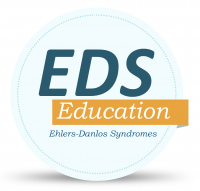1. “Patient Navigation (PN) in cancer care refers to individualized assistance offered to patients, families and caregivers to help overcome health system barriers and facilitate timely access to qualified medical and psychosocial care”. (Wilcox & Bruce, 2010) However, the PN role is not limited by a single definition, but rather is broad in concept and can apply to any help or service that assists patients in overcoming barriers to improve outcomes in detection, diagnosis, treatment and survivorship. (Wells et al. 2008) The main goal of the patient navigator is to assist patients in acquiring an enhanced sense of preparedness. (Pedersen & Hack, 2011) Patient navigator programs seem to address the barriers of early access and treatment by helping the clients move through the system and identify other resources for care. PN also can act as a coach to encourage participating and compliance once programs are available. This may include coordinating doctor’s visits, facilitating contact between patients and physicians, arranging rides to and from the hospital, helping fill out insurance forms or enrolling in programs for financial assistance, clarifying information and even suggesting what to ask the healthcare provider. (Shockney, 2010) Harold P. Freeman founded the nation’s first patient navigation program in 1990 in Harlem, New York. Dr. Freeman published principles of navigation learned from his experience in 2011. (Freeman & Rodriquez, 2011)
2. Mattie felt like the most important thing to her was being heard and having someone believe her. Aside from this, healthcare providers can implement some of the principles of patient navigation; identifying barriers and helping the patient address those barriers. Connecting the EDS patient to advocacy groups, support groups and national organizations with knowledge of current resources is a great place to start. Many times, referrals are not made in the traditional way; but rather, from others who have learned from their own personal experience. This is why it is so important to connect with other EDS patients and families.
3. Pain management with EDS is complex and should be approached in a multidisciplinary way. It is important to identify the type and source off pain in order to find the appropriate solution. The presentation of someone with chronic pain may look very different than what we typically see in acute care; however, someone with EDS can have both chronic pain and acute pain. Thoroughly evaluate your patients’ pain using your favorite acronym. PQRST or OLDCARTS are two that may be familiar. (https://forum.nursejanx.com/t/old-carts-socrates-pqrst-nursing-mnemonics-for-pain-symptoms/550).
